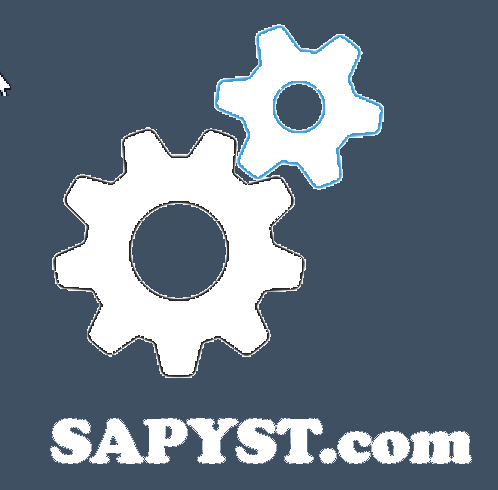WHAT IS AN ERP?
SAP is an ERP but, what is exactly that?
The word ERP stands for Enterprise Resource Planning. But, nowadays its functionality is extended beyond only Planning, its name remains due to its origin.
An ERP is a system that covers all processes of a company. Used for the management of all of its resources and sharing the needed data among the different departments in a unique database.
Instead of a big custom development, where a new program is created from zero for a determined company, an ERP package is a standard program that offers the most used and common functionalities in all type of industries and that allows different levels of configuration for its customization to each one where it wants to be implemented.
It is normally built of different modules with the different process functionalities which communicate to each other. In this way, an ERP will cover all processes from Finished Goods Sales Orders to Raw Materials Purchase Orders of components to be used in Production Orders. Including the registration of labor hours, stock transfers, accounting, etc.
The ERP will register all of this information, and in case the action is relevant, it will update automatically the accounting records. The goal is that data is only entered once in the system and it is available for all involved people.
ORIGIN
The origin of ERP is in the MRP (Materials Requirement Planning) that later on it evolved to MRP II (Manufacturing Resource Planning) and finally to ERP.
In the inital stage, different programs where developed for different processes inside the company. For executing certain calculations, for the accounting processes, for calculating of raw materials to consume, …
The MRP is a functionality used for planning Materials Requirements in the Production Process. For that it explodes to lower levels (Raw Materials and Components) the needed requirements for being able to manufacture and deliver it in a certain date.
This application did not have into account Machines or Labor Capacity. So, it could be possible that all Materials were available but Production was not able to take place due that not enough employees or machines were available. For that, new functionality was added given birth to MRP II.
On the other hand, and once Production dates have been established, other different program is needed to register consumed Materials, actual costs, and all the rest of needed information for controlling and managing the process. Some of this information should be registered in Accounting.
Due to that, the next logical step was to integrate all of these different functionalities in the same system for avoiding the entering of the same data more than once. Avoiding in this way incurring in more administrative costs, manual errors and having obsolete information.
This integration gave birth to ERPs.
ERP CHARACTERISTICS
- They Integrate all company information
- They share information in real time
- They allow certain customization
Once a piece of information is entered in the system, for instance the delivery of some Finished Goods to a Customer by Warehouse, automatically all the rest of departments have access to this actual data.
So, Sales Department will know that this Material quantity is not available for sale, Account Department will see this transaction registered and start the Accounts Receivable process, and so on all affected people in the company by this action.
An ERP allows the immediate use of different best practices around different industries for each of the different areas. But each company is different and has different specific requirements.
For that is necessary that the company customize or configure its ERP based in on its requirements. This process is taken out during the implementation.
The configuration goes from defining basic data about the company structure (number of warehouse, plants, work centers, …) to the way of doing different processes (make-to-stock planning, purchase orders release strategies, …).
Due to the involved complexity, especially in big companies, sometimes available configuration options are not enough. It appears then what is known as a gap between what the ERP offers and what the company needs.
In this case, it is needed to make custom developments, sometimes it is worth to do it inside the same ERP, other using an external software. For instance, developing interfaces to communicate with other specific software packages or programs.
ERP PROS AND CONS
The advantages of having an integrated system are obvious.
What also is a great advantage it is to use from the first day a software that has been developed and debugged during years offering a great reliability and a much faster implementation period than if it had to be developed from scratch.
On the other hand, some special companies, due to their specific requirements, find it very difficult to adapt them. The gap is too big.
And that can make them to incur in high costs during its implementation.
For solving this issue, ERP software companies are developing industry specific packages that covers these odd processes.

Recent Comments